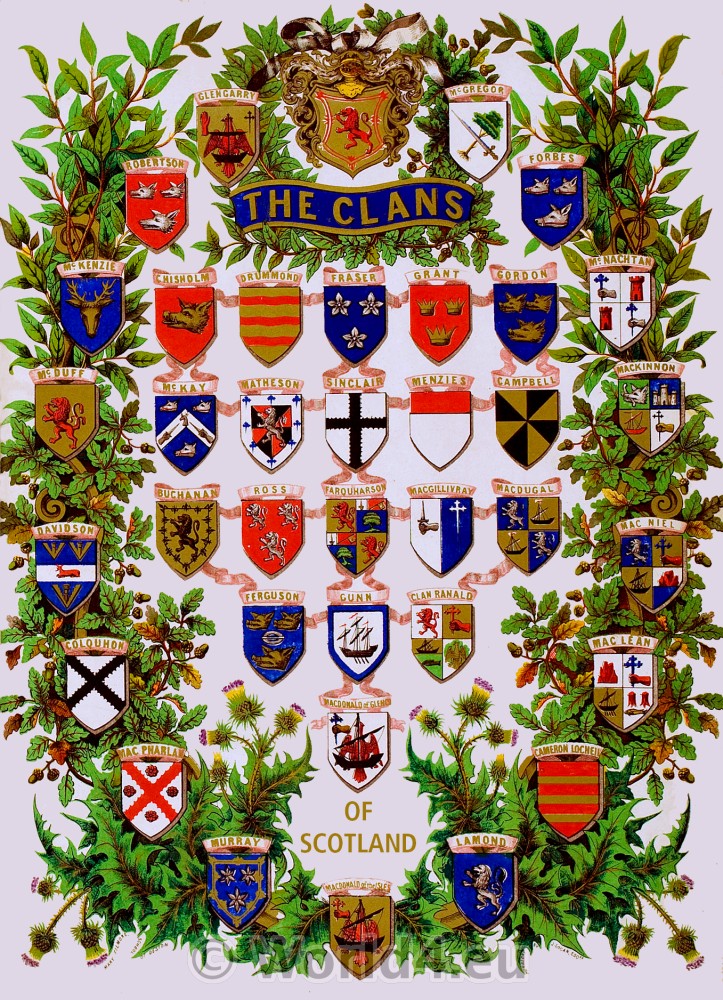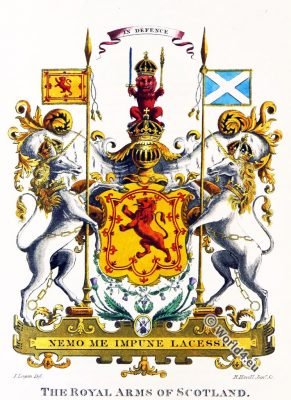The Clans of the Scottish Highlands.
Illustrated by appropriate figures, displaying their dress, arms, tartans, armorial insignia, and social occupations, from original sketches by R.R. McIan, esq.: With accompanying description and historical memoranda of character, mode of life by James Logan. London: Ackermann, 1845-1847.

Above: Map of the Clans of Scotland. With the possessions of the Highland Proprietors according to the Acts of Parliament of 1587 & 1594. Constructed by T. B. Johnston F.R.G.S. F.R.S.E. & F.S.A.S. and Colonel James A. Robertson F.S.A.S. 1899
Map of Scotland, showing the Clan Territories.
NOTE ON THE MAP.
The large Map is constructed and coloured to show the situation and possessions of the Clans, and the properties of the landlords, in the Highlands and Islands of Scotland.
The Clans are enumerated in two Acts of the Scots Parliament, passed in 1587 and 1594 respectively. The names of the landlords are appended to the Act of 1587.
There is thus historical authority for the names and possessions of the persons occupying all the north of Scotland at the end of the sixteenth century.
This early date was selected, because then most of the Highland tribes were still in occupation of the lands which they had inherited from their forefathers. During the troubles of the following century some of the weaker clans were deprived of their possessions by their stronger neighbours. *)
In compiling the Map Mr Johnston and Colonel Robertson made every effort to secure accuracy. It will be understood, however, that in most cases the boundaries of clan territories can be only approximately indicated.
The rotation and numbering of the Clans and Landlords have been made as they occur in the Acts of Parliament (see below).
On the Map the residences of the chiefs and heads of families are marked in black, having the number of the clan below in upright print, while the possessions of the landlords are named in italics with Roman numerals.
*) General Stewart of Garth’s well-known map shows the clan territories as in 1745. Mr W. B. Blaikie’s Itinerary of Prince Charles Edward Stuart (Scottish History Society, 1897) contains a fine map, based, as regards the clan boundaries, on General Stewart’s, with some necessary modifications.
ROTATION OF THE HIGHLAND CLANS AS MENTIONED IN TWO ACTS OF PARLIAMENT, 1587 AND 1594.
[The numbers correspond with those given on the Map of the Clans.]
- Buchanans.
- MacFarlanes.
- MacNabs.
- Grahams of Menteith.
- Stewarts of Balquhidder.
- Clan Gregor, the MacGregors.
- Clan Lauren, the M’Larens.
- Campbells of Lochnell.
- Campbells of Inverawe.
- Clan Dougal, M’Dougals.
- Stewarts of Appin.
- Clan Ian Abrach, or Macdonalds of Glencoe.
- Stewarts in Atholl, and parts adjacent.
- Clan Donachy, or Robertsons of Atholl, and parts adjacent.
- Menzies.
- Clan M’Thomas, in Glenshee.
- Fergusons, in Glenshee.
- Spaldings, in Glenshee.
- M’Intoshes of Glentilt.
- Clan Cameron.
- Clan Ranald of Lochaber, or Macdonalds of Keppoch.
- Clan Ranald of Moydart, Knoydart, Arasaig, Morar, and Glengarry, all Macdonalds.
- MacLeods of Lewis.
- MacLeods of Harris.
- Clan Neil, or MacNeils.
- Clan Kinnon, or MacKinnons.
- Clan Macian, or Macdonalds of Ardnamurchan and Sunart.
- Clan Chattan, Macphersons and Mackintoshes.
- Grants.
- Frasers.
- Clan Kenzie, or Mackenzies.
- Clan Anrias, or Ross’s.
- Munroes.
- Murrays, or Sutherlands.
- Clanquhele, or Shaws of Rothiemurchus.
- Clan Donald, north and south, Macdonalds.
- Clan Gillean, or MacLeans.
- Clan Morgan, or Mackays.
- Clan Gunn.
- Macaulays.
- Galbraiths.
- Farquharsons.
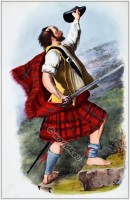
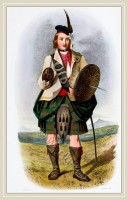
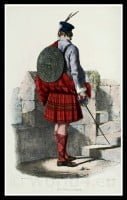
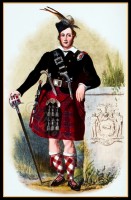


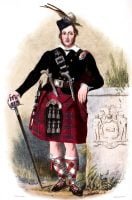


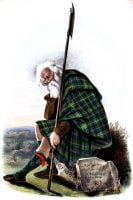
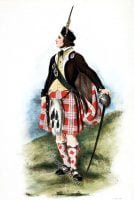

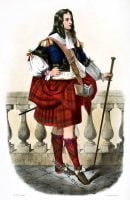
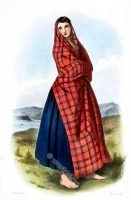


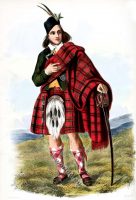
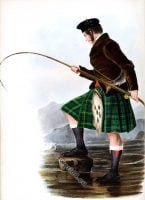

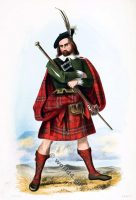

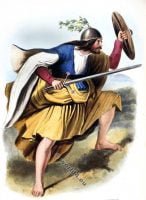

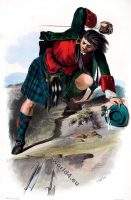

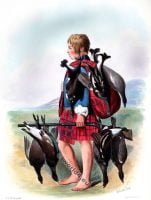



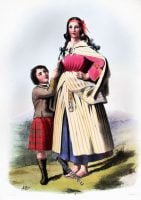
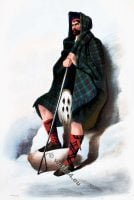



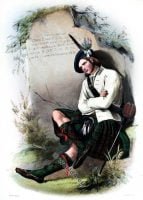
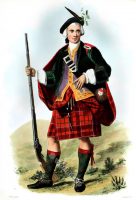
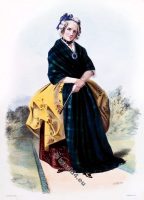
The Highlanders of Scotland, 1870.
PORTRAITS ILLUSTRATIVE OF THE PRINZIPAL CLANS AND FOLLOWINGS AND THE RETAINERS OF THE ROYAL HOUSEHOLD AT BALMORAL, IN THE REIGN OF HER MAJESTY, BY KENNETH MACLEAY, ESQ., R.S.A.
THE following Portraits and Notices are intended as slight of the Highlanders of Scotland, in the rain of HER MAJESTY QUEEN VICTORIA.
Highlanders of the present day differ in many respects from their ancestors of the last century; but the ties of blood an clanship, the influence of local associations, and the comparative inaccessibility of the districts, have hitherto preserved most of their leading characteristics. In another century, it is probable that these will be, in a great measure, lost. Railroads, with their facilities for transporting natives of the glens, to the cities of the plains, and citizens, to remote regions of the Highlands, must, in time, blend more and more the Gael with the Lowlander. Now that the “Land of the Heather” is familiar to all, when Britain is proud of her Highland Regiments,- when so many of her Southern sons migrate annually, to seek health and recreation in the north, some record of the People of the Highlands, as they now are, may claim a national interest, and prove useful to the future historian.
The Retainers belonging to the Queen`s Highland Estate of Balmoral, and Clansmen of the principal families, form the subjects selected to illustrate the Race.
The fixedness of the abode of Highlanders among their own people and their own districts, apart from any intercourse with strangers, has enabled them, habitually, to trace back family descent farther than is elsewhere customary, except with the accompaniments of wealth and station. The present advantages of registration may, in the future, enable others of our countrymen to do the same. The feeling of holding a stake in the past, has its own value, and its influence over the Future, often bearing fruit in such sentiments as Thought poor, our parents and grandparents were honest; *” Our forefathers were fearless, loyal, and true, let us nerve disgrace them.” May the many many noble qualities and simple virtues thus inherited, us never disgrace them.” May the many noble qualities and simple virtues thus inherited, with the kindly feeling still subsisting between Chief and Clansmen, and the mutual trust uniting all Highlanders in brotherhood, long survive, whatever changes time may bring!
Retainers of the Royal Household
THE BRATACH BHÀN, OR WHITE BANNER OF THE MACKAYS.
This Banner belonged to the Abrach or Strathnaver branch of the MacKays, and is thus described by the author of the Book of MacKay. “The banner is of cream white silk, hence the name Bratach Bhàn, i.e.. Fair Banner, by which it is sometimes known, and is in a tattered condition. It is evidently a fragment of its former self. Its length is only 36 inches-a size far too small for a battle flag. It will be observed that the shield and crest are not now correctly related to the hoist or leather strip sown along what is known as the top of the flag in the photographic reproduction.
As related to the hoist, the shield now lies unnaturally on its side instead of facing it, and the lion rampant which it carries is made to appear as a lion passant. Evidently the leather hoist became detached when the flag got tattered, and was then by misadventure sewn on the wrong side. If we imagine the hoist attached to what is shown as the left side of the flag the shield and crest will appear correctly placed, the flag will be thirty-six inches broad, or, allowing for frayed margins, perhaps thirty-eight, while its length may have extended to thirty inches or more.
“Round the hand runs the legend, VERK VISLY AND TENT TO YE END. Across the palm of the hand are the Gaelic words BE TREN (Bidh Treun), BE VALIANT.” The Rev. Wm. MacKenzie, minister of Tongue, writing in the Old Statistical Account in 1792 refers to the banner as follows:
“There is a cave in the rock upon which the Castle (Bharaich near Tongue) is built, called Leabuidh Eoin Abaruich, i.e., John of Lochaber’s bed, whither he is said to have retired in time of danger. A family of MacKays is descended from him and are reported still to have in their possession his banner, with the motto wrought in golden letters, Biodh treun, Biodh treun, Be Valiant.”
The banner must have occupied a large place in the estimation of the MacKays, when we find the gathering tune and the slogan of the elan to be Bratach Bhàn Chlann Aoidh, The White Banner of the MacKays. It is believed to have been the banner of Iain Abrach (so called from his mother, a daughter of MacDonald of Keppoch), who led the MacKays at the battle of Druim-nan-Coup in 1433. It descended in the possession of the family of the Standard Bearer, till it was handed over into the custody of the Clan MacKay Society in the year 1897, who in turn deposited it for preservation in the National Museum, Edinburgh.
Map of Scotland divided into Clans, 16th century.
Source:
- The Highlanders of Scotland. PORTRAITS ILLUSTRATIVE OF THE PRINZIPAL CLANS AND FOLLOWINGS AND THE RETAINERS OF THE ROYAL HOUSEHOLD AT BALMORAL, IN THE REIGN OF HER MAJESTY QUEEN VICTORIA, BY KENNETH MACLEAY, ESQ., R.S.A. With topious Notices from Authentic Sources. In colored Lithographs by Vincent Brooks. London: Mr. Mitchel, Publisher to her Majsty, 33, Old Bond Street, W. Edinburgh: Blackwood and Sons. 1870.
- Dictionarium scoto-celticum: a dictionary of the Gaelic language : comprising an ample vocabulary of Gaelic words, as preserved in vernacular speech, manuscripts, or printed works, with their signification and various meanings in English and Latin, illustrated by suitable examples and phrases, and with etymological remarks, and vocabularies of Latin and English words, with their translation into Gaelic : to which are prefixed, an introduction explaining the nature, objects and sources of the work, and a compendium of Gaelic grammar, 1828.
- The Scottish clans and their tartans: with notes. LIBRARY EDITION. Publisher: Edinburgh: W. & A.K. Johnston, ca. 1910.
- The Clans, Septs, and Regiments of the Scottish Highlands by Frank Adam. Publisher Edinburgh and London, W. & A. K. Johnston, limited, 1908.
- The clans of the Scottish Highlands: illustrated by appropriate figures, displaying their dress, arms, tartans, armorial insignia, and social occupations, from original sketches by R.R. McIan, esq. : with accompanying description and historical memoranda of character, mode of life, &c. &c. / by James Logan London: Ackermann, 1845-1847.
- Historical geography of the clans of Scotland by Thomas Brumby Johnston; James Alexander Robertson, joint author; William Kirk Dickson. Edinburgh and London, W. & A. K. Johnston, 1899.
Continuing

